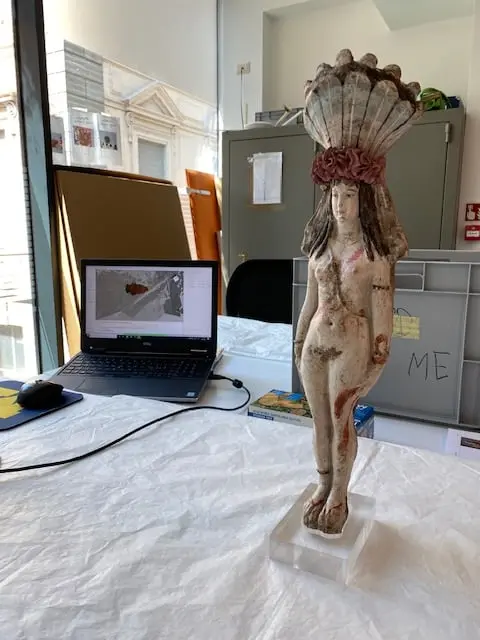SUR.VI.VE - Surveying Virtual Voids in Egyptian collection

2020
SUR.VI.VE. (Surveying Virtual Voids in Egyptian collections). A Cultural Study on Lost Terracotta Molds is a research project awarded the ‘Seal of Excellence’ awarded by the European Commission (H2020-MSCA-IF-2019) at the Polytechnic Milan from 2020-2022. A second phase of the same project, entitled SUR.VI.VE. (SURveying VIrtual Voids in Egyptian collections). Phase 2: Extension to other collections, was funded by the European Union (Next Generation EU) under the National Recovery and Resilience Plan (PNRR) – Funding of Projects presented by young researchers – Notice No. 247 of 19/908/2022.
The integration of traditional analytical approaches with innovative digital methodologies was the foundation of the SUR.VI.VE Project. (SURveying VIrtual Voids in Egyptian collections) A Digital and Cultural Study on Terracotta Figurines and their Lost Molds and its extension SUR.VI.VE-Phase 2 at the Polytechnic of Milan.
The objective of the project was to apply both approaches to the corpus of ancient Egyptian terracotta figurines from a museum collection, in our specific case those from the Egyptian Museum in Turin, in order to demonstrate how 3 D models combined with the study of material aspects (autopsy analysis of the pieces and comparison with archaeological excavation materials) can contribute to better trace the production and distribution techniques, and through a comparison between similar types of figurines define their socio-cultural context and therefore their function.
The 3D models were obtained using a structured light scanner. The models are accurate from a metric point of view and also retain colorimetric information. Once exported to various file formats, 3 D models can be used for a variety of purposes, from detailed digital databases and museum collections to 3 D printing and virtual and augmented reality.
Although the main objectives of the SUR.VI.VE project were initially to provide a first systematic and in-depth digital study of a collection of terracotta statuettes and to identify criteria that can be replicated in other collections, to date this project and the type of hybrid approach adopted aims to act as a model for future research in choroplastic studies, inspiring renewed academic interest in this field and fitting more broadly into the realm of cultural heritage digitization that is making artifacts more accessible and interactive than ever.
Teams
Dr Clementina Caputo (PI), Prof. Corinna Rossi, Dr Alessandro Mandelli
Partner museums
Museo Egizio, Torino